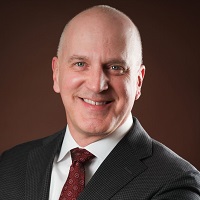Seven Ways to Protect Older Adults from Financial Abuse
Scams are everywhere, and older people are prime targets. It’s critical to be vigilant, safeguard personal info, get paperwork in order and more.


The sad truth is we all become more vulnerable to scams and financial abuse as we age into our later years. Here are some sobering statistics from Consumer Affairs:
- Older people are swindled out of more than $3 billion each year.
- More than 3.5 million older adults are victims of financial exploitation each year.
- Older people targeted by fraudsters suffer an average loss of $34,200.
As a financial adviser, I believe it’s crucial to ensure that our clients’ hard-earned wealth remains secure and protected from potential financial abuse. We can play a pivotal role in guiding our clients through the complexities of preventing elder financial abuse. Here are some insights I often share with clients and, with their permission, with their adult children, too, as they are often more concerned about scams and financial abuse than their parents.
1. Raise awareness.
A primary step in the battle against elder financial abuse is raising awareness. You must talk about the potential risks associated with growing older, including scams, fraudulent investments and exploitation by family members or caregivers.
From just $107.88 $24.99 for Kiplinger Personal Finance
Become a smarter, better informed investor. Subscribe from just $107.88 $24.99, plus get up to 4 Special Issues

Sign up for Kiplinger’s Free Newsletters
Profit and prosper with the best of expert advice on investing, taxes, retirement, personal finance and more - straight to your e-mail.
Profit and prosper with the best of expert advice - straight to your e-mail.
You can use your own experiences or trending news to start the conversation. A good resource is the AARP Scams & Fraud page with up-to-date information on fraudulent schemes and quizzes about scams.
2. Maintain open communication.
Just like meeting with your financial adviser quarterly, you should be talking about finances with your loved ones this frequently. We encourage honest and clear communication within families because this can lead to early detection and prevention of financial abuse.
Talking about money can be challenging for families, but an open dialogue helps identify unusual or suspicious activities related to finances that could indicate abuse.
3. Arrange for a durable power of attorney.
A durable power of attorney (POA) should be trustworthy and capable of managing their loved one’s finances if incapacitated. Speak with your financial adviser or elder law attorney about selecting the right financial power of attorney for your circumstances.
If you are a solo ager, your attorney may be able to act as your POA. See my previous article on Tips for Managing Money for an Incapacitated Loved One.
4. Get estate planning in order.
Another essential aspect of wealth management for older adults is estate planning. It’s crucial to discuss the importance of creating or updating a will, trust or estate plan. We advise clients to seek legal counsel to understand the legal protections available and explore options for safeguarding your assets. Not only does this protect your assets, but it also ensures that your wishes are followed accurately.
A well-structured estate plan can help transition wealth to the next generation.
5. Regularly monitor accounts.
Reviewing financial statements, bank accounts and investment portfolios monthly is essential. A few simple steps can help avert fraud, such as setting phones to send unknown numbers to voicemail, using a credit freeze and setting stricter privacy controls on social media. Signing up for financial account and credit monitoring helps detect any irregularities or unauthorized transactions.
It may make sense, in some cases, to allow a trusted loved one to also monitor your parents’ accounts, depending on their support needs and comfort level. Timely identification is essential to prevent financial abuse.
6. Safeguard personal information.
The digital world has increased risks, and scams abound online. Using strong, unique passwords is a simple yet effective measure to enhance online security. Consider using a password manager like LastPass, which offers a free password generator.
We also recommend steps like keeping documents secure, shredding sensitive papers and avoiding sharing personal information with unknown parties. These seemingly small actions can make a big difference in safeguarding against fraud.
7. Stay informed about scams.
Financial scams and elder abuse tactics evolve continually. The scams (e.g., romance scams, grandparent scams, investment scams, phone scams, sweepstakes scams, crime scams, Medicare scams, phishing, charity scams, funeral scams, IRS impersonation scams, counterfeit prescription drugs, malware, false investment opportunities, health product scams, home repair scams, lotteries, reverse mortgage scams, account takeover scam texts, cryptocurrency fraud, fake insurance and identity theft) are constantly evolving and regularly threatening older adults. The National Council on Aging (NCOA) explains some of the most common scams.
Vigilance is the key. Being diligent and partnering with an elder law attorney and your trusted financial adviser helps to stave off predatory efforts against older adults.
Related Content
- Financial Abuse Is on the Rise: What It Is and What to Do About It
- Signs of Financial Abuse in Marriage: What to Watch For
- What to Discuss With Your Aging Parents as They Get Older
- What Gen X Needs to Know About Their Aging Parents' Finances
- How to Monitor Your Credit Reports for Free
Profit and prosper with the best of Kiplinger's advice on investing, taxes, retirement, personal finance and much more. Delivered daily. Enter your email in the box and click Sign Me Up.

Financial adviser Tom West, CLU®, ChFC®, AIF®, founded Lifecare Affordability Plan (LCAP) to address a critical need for actionable planning that integrates finances, healthcare and senior housing. Tom has nearly 30 years of experience guiding families through financial and healthcare decisions. By bridging the gap between finance and healthcare, LCAP’s experienced team works with individuals and financial advisers to provide families with a financial strategy that meets changing healthcare needs while preserving the caregiver’s quality of life.
-
 Forget FIRE: Why ‘FILE’ Is the Smarter Move for Child-Free DINKs
Forget FIRE: Why ‘FILE’ Is the Smarter Move for Child-Free DINKsHow shifting from "Retiring Early" to "Living Early" allows child-free adults to enjoy their wealth while they’re still young enough to use it.
-
 7 Tax Blunders to Avoid in Your First Year of Retirement
7 Tax Blunders to Avoid in Your First Year of RetirementA business-as-usual approach to taxes in the first year of retirement can lead to silly trip-ups that erode your nest egg. Here are seven common goofs to avoid.
-
 How to Plan for Social Security in 2026's Changing Landscape
How to Plan for Social Security in 2026's Changing LandscapeNot understanding how the upcoming changes in 2026 might affect you could put your financial security in retirement at risk. This is what you need to know.
-
 7 Tax Blunders to Avoid in Your First Year of Retirement, From a Seasoned Financial Planner
7 Tax Blunders to Avoid in Your First Year of Retirement, From a Seasoned Financial PlannerA business-as-usual approach to taxes in the first year of retirement can lead to silly trip-ups that erode your nest egg. Here are seven common goofs to avoid.
-
 How to Plan for Social Security in 2026's Changing Landscape, From a Financial Professional
How to Plan for Social Security in 2026's Changing Landscape, From a Financial ProfessionalNot understanding how the upcoming changes in 2026 might affect you could put your financial security in retirement at risk. This is what you need to know.
-
 6 Overlooked Areas That Can Make or Break Your Retirement, From a Retirement Adviser
6 Overlooked Areas That Can Make or Break Your Retirement, From a Retirement AdviserIf you're heading into retirement with scattered and uncertain plans, distilling them into these six areas can ensure you thrive in later life.
-
 I'm a Wealth Adviser: These Are the 7 Risks Your Retirement Plan Should Address
I'm a Wealth Adviser: These Are the 7 Risks Your Retirement Plan Should AddressYour retirement needs to be able to withstand several major threats, including inflation, longevity, long-term care costs, market swings and more.
-
 High-Net-Worth Retirees: Don't Overlook These Benefits of Social Security
High-Net-Worth Retirees: Don't Overlook These Benefits of Social SecurityWealthy retirees often overlook Social Security. But timed properly, it can drive tax efficiency, keep Medicare costs in check and strengthen your legacy.
-
 Do You Have an Insurance Coverage Gap for Your Valuables? You May Be Surprised to Learn You Do
Do You Have an Insurance Coverage Gap for Your Valuables? You May Be Surprised to Learn You DoStandard homeowners insurance usually has strict limits on high-value items, so you should formally "schedule" these valuable possessions with your insurer.
-
 8 Practical Ways to Declutter Your Life in 2026: A Retirement 'Non-Resolution' Checklist
8 Practical Ways to Declutter Your Life in 2026: A Retirement 'Non-Resolution' ChecklistHere's how to stop wasting your energy on things that don't enhance your new chapter and focus on the things that do.
-
 To Retire Rich, Stop Chasing Huge Returns and Do This Instead, Courtesy of a Financial Planner
To Retire Rich, Stop Chasing Huge Returns and Do This Instead, Courtesy of a Financial PlannerSaving a large percentage of your income, minimizing taxes and keeping spending in check can offer a more realistic path to retiring rich.